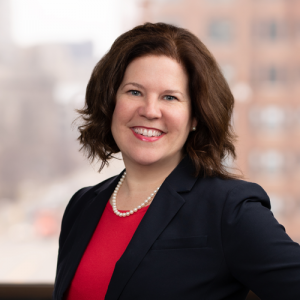President Biden signed the American Rescue Plan Act of 2021 (the “ARP”) into law on March 11, 2021. Included in the massive $1.9 trillion relief package was an additional $8.5 billion for rural hospitals and providers.
The $8.5 billion creates a new relief fund for certain eligible rural health care providers (“Rural Relief Fund”). This new Rural Relief Fund is separate from the existing Department of Health and Human Services (“HHS”) $178 billion Provider Relief Fund created by the Coronavirus Aid, Relief and Economic Security Act (“CARES Act”), though the two are structured nearly identically.
The purpose of both funds, for example, is to reimburse eligible health care providers for health care-related expenses and lost revenues that are attributable to COVID-19 and payments cannot be used to reimburse any expenses or lost revenue reimbursed from another source or that another source is obligated to reimburse. Both funds also use the same definitions for health care-related expenses and lost revenue.
The key difference between the two is the definition of an eligible health care provider. The definition for the new Rural Relief Fund requires providers to be considered a rural provider or supplier. The ARP uses an exceptionally broad definition of rural for these purposes, including:
- A provider or supplier located in a rural area (i.e., outside of a Metropolitan Statistical Area);
- A provider treated as located in a rural area (i.e., is reclassified as rural under 42 CFR 412.103);
- A provider or supplier located in any other area that serves rural patients (as defined by HHS), which may include a Metropolitan Statistical Area with a population of less than 500,000;
- Rural Health Clinics;
- A provider or supplier that furnishes home health, hospice or long-term services and supports in an individual’s home located in a rural area (outside of a Metropolitan Statistical Area); and
- Any other rural provider or supplier as defined by HHS.
Some summaries of the new Rural Relief Fund have noted providers need to submit an application prior to receiving funds from this new Rural Relief Fund, describing this approach as a key distinction from the existing Provider Relief Fund. There is text in the ARP that says eligible health care providers must submit an application in order to be eligible for a payment. It is worth noting, however, that this language mirrors almost identical language included in the CARES Act that created the Provider Relief Fund. In many cases, HHS distributed those payments without any pre-payment application from providers. So, while HHS may ultimately require rural providers to submit an application for additional funding, it is also possible that HHS will allocate payments from the new Rural Relief Fund without requiring any affirmative steps by providers. Though recipients will certainly need to report to HHS at some point in order to justify retaining any payments received.
Notably, an earlier version of the ARP passed by the Senate included a provision restricting the ability of recipients to allocate or transfer payments to related entities. Specifically, that version of the bill stated that if a parent organization received a payment from the fund, the parent organization must allocate all of the payments to the rural provider that was eligible for the payments. That provision was not included in the final version of the bill that was signed into law. The ARP did not, however, include a provision specifically allowing entities to allocate these payments to related entities. HHS may issue interpretive guidance on this issue in the future.
HHS has not yet provided any guidance about how the new funds will be distributed. Given the similarities between the Provider Relief Fund, HHS may rely largely on existing guidance for administering and overseeing this new Rural Relief Fund.
HHS Provider Relief Fund Reporting (Non) Update
HHS still has not opened the Provider Relief Fund Reporting Portal, though providers can register in the Portal. The Provider Relief Fund Reporting Portal was initially scheduled to open on January 15, 2021, but was delayed on that date, and HHS has not yet set a new date for opening the Portal. HHS has said that it will provide significant advance notice prior to the due date of providers to submit an initial report.
Medicare Accelerated and Advance Payments Update
In March 2020, the CARES Act significantly expanded an existing CMS Accelerated Payment Program (“APP”) in response to COVID-19. The CARES Act expanded the APP to apply to providers and suppliers nationwide, increased the amount of payments available to providers and suppliers and lengthened the repayment time frames.
Legislation signed into law in October 2020 changed the applicable repayment schedule, allowing providers up to 1 year to repay APP payments. After 1 year, Medicare payments owed by providers and suppliers are recouped at a rate of 25% for 11 months. Payments are then recouped at a rate of 50% for another 6 months. After the final 6 months, the remaining balance is due, and interest attaches at a rate of 4%. That 1-year deadline is approaching as the first APP payments were made April 2, 2020.
The ARP did not change the current repayment schedule for APP payments, despite calls from the industry to do so given the continuation of the Public Health Emergency.
If you have questions or would like additional information about this topic, please contact:
- David Snow at (303) 801-3536 or dsnow@wp.hallrender.com;
- Lori Wink at (414) 721-0456 or lwink@wp.hallrender.com;
- Joseph Krause at (414) 721-0906 or jkrause@wp.hallrender.com;
- Elizabeth Elias at (317) 977-1468 or eelias@wp.hallrender.com;
- Benjamin Fee at (720) 282-2030 or bfee@wp.hallrender.com; or
- Your primary Hall Render contact.
Hall Render blog posts and articles are intended for informational purposes only. For ethical reasons, Hall Render attorneys cannot—outside of an attorney-client relationship—answer specific questions that would be legal advice.





